The Salkantay Trek to Machu Picchu is a must do! Skip the Inca trail and go for this remote alternative. Surrounded by mountains and jungle you’ll understand why the Inca called this place home. This blog post will answer all the questions you have about the trek and I’ll give you some tips from my time leading trips on the Salkantay Trek in Peru!
The Salkantay Trek to Machu Picchu
What is the Salkantay Trek to Machu Picchu?
The Salkantay Trek is a 4 or 5-day hike through the mountains and jungles of Peru. Sometimes photos of the Salkantay Trek don’t look real they are so beautiful, and they still can’t capture the true beauty of an area.
During the trek, hikers can travel past remote glacial lakes, visit secluded mountain villages, stay at local coffee farms, hike through the jungle, and catch their first glimpse of Machu Picchu.
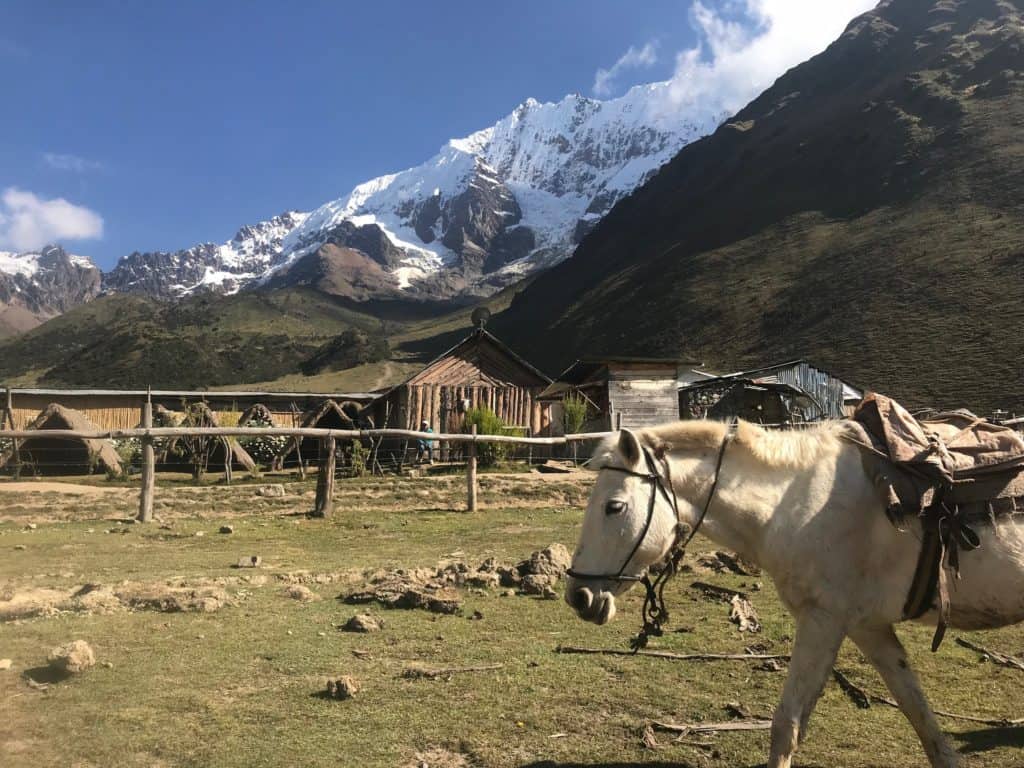
Why the Salkantay Trek to Machu Picchu is better than the Inca Trail
I have to start this section by saying I’m 100% bias as I’ve never done the Inca Trail. However, I’ve never done it because of the reasons I’m about to share with you.
Pin this Salkantay Trek to Machu Picchu Post for Later
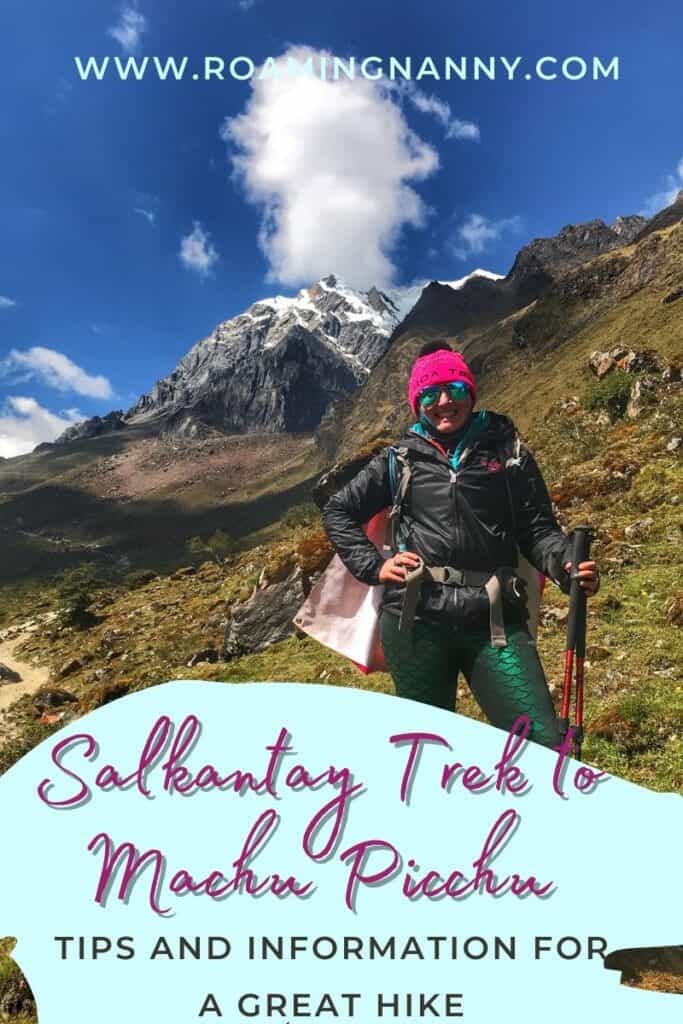
Stairs
For me and my knees stairs are the worst. While the Salkantay Trek has a day with a decent about of stairs and I suffered through them while doing Mount Hua in China, I try my best to avoid them.
The Inca Trail is stairs upon stairs upon stairs. For me that is a hard pass.
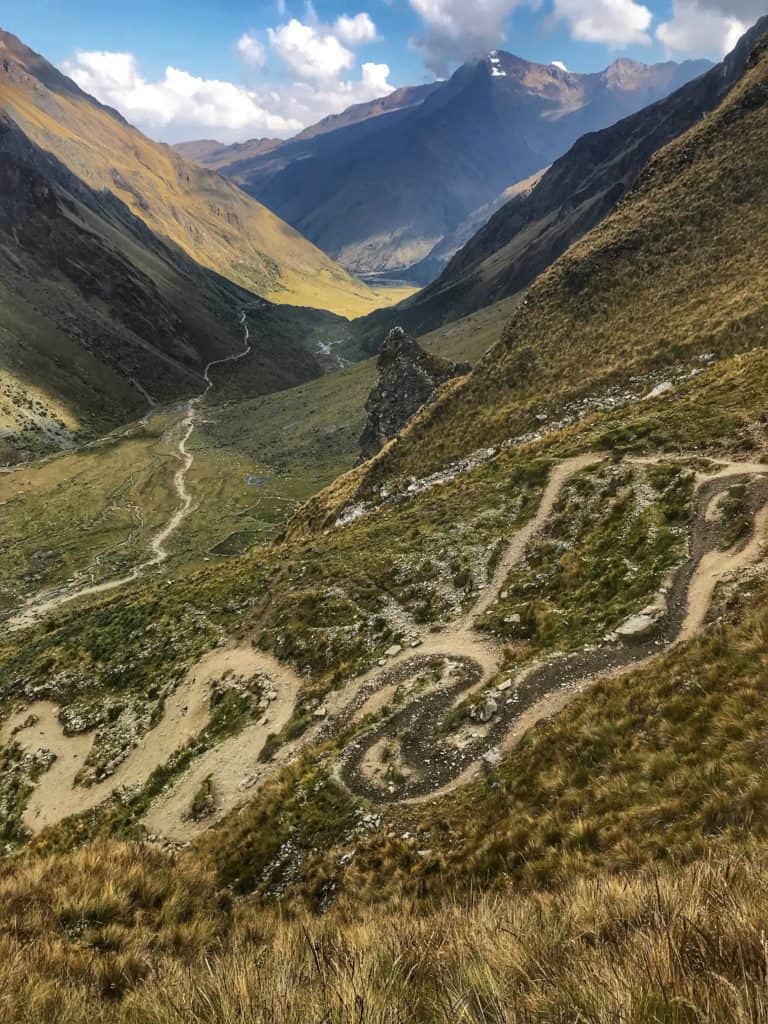
Overcrowding
The Inca Trail is notorious for being overcrowded. I have a close friend who owns a trekking company in Cusco, check out Mountain Gods Peru for the most amazing trekking team in Cusco, and it is one of their least favorite hikes to lead.
She told me that every time they do it the team has to hike very fast to get to camp to try and find a good spot to set up camp. Spots are limited and the earlier they arrive the better the sot they’ll get.
Additionally, on trail it gets crowded too. With all the stairs I mentioned their are lots of people climbing them. In some areas it is unsafe to pass other hikers so you end up in a hiker traffic jam.
I don’t know about you, but when I’m going on a hike I try to find solitude. And if you’re looking for some peace and quiet the Salkantay Trek to Machu Picchu is the way to go.

Unique Experience
Everyone does the Inca Trail, and while I know it’s cool, I just want something different. When I travel I try to seek out alternatives to classic hikes and the Salkantay fit the bill more than I ever thought it would!
Where do I start the Salkantay Trek to Machu Picchu?
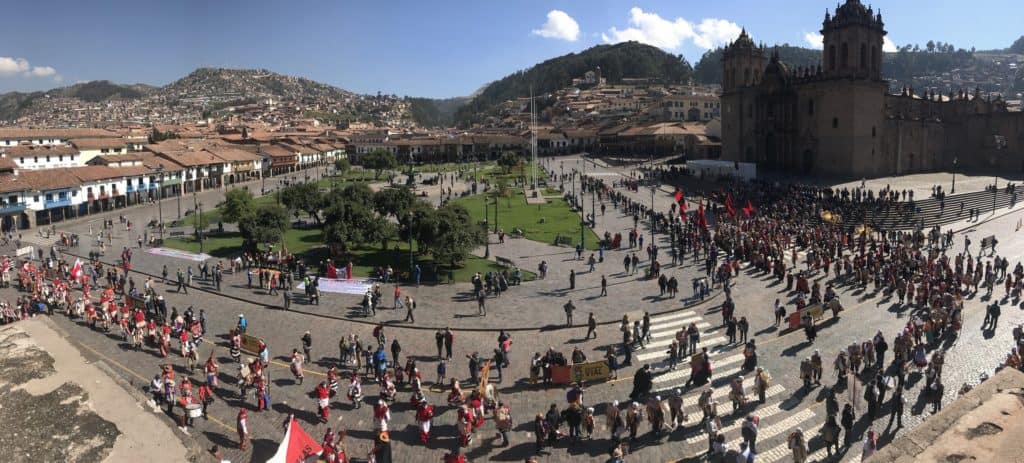
All the treks I’ve done on the Salkantay have started in Cusco, Peru. I highly recommend getting to Cusco at least 3 days before the start of your hike. This way you can explore the city, go on a few day trips from Cusco, and get acclimated to the altitude.
How long is the Salkantay Trek to Machu Picchu?
The Salkantay Trek is only 46 miles long, but goes over high mountains and through dense jungle. While the mileage is low trekkers should not underestimate the terrain on this hike.
What is the highest point on the Salkantay Trek?
The highest point on the trail is Salkantay Pass at 15090 feet/4600 meters. For many, this is the highlight of the hike itself as you get to stand in the shadow of the gorgeous Salkantay Mountain.
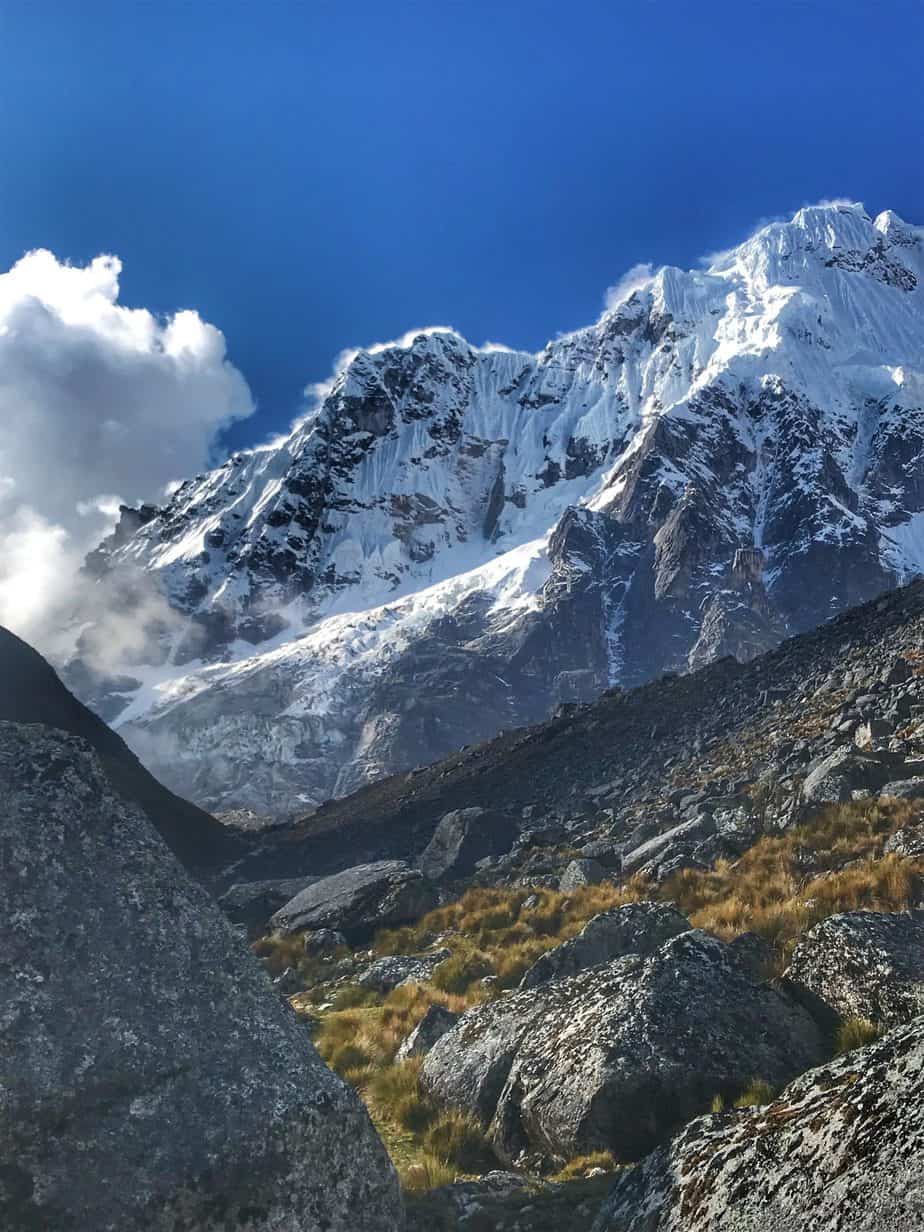
best time of Year to do the Salkantay Trek to Machu Picchu
The best time of year to do the Salkantay Trek is during the Dry Season from May to October. Keep in mind, this does not mean you will not get any precipitation, it only means you will get less. I have lead this trek 5+ times and have hiked in both rain and snow.
If you can’t get to Cusco during the Dry Season to head out on this trek I’d recommend going in April or November to stick as close to it as you can. During the rainy season this area has been known to get land and rock slides from excessive rain. I’ve had freidns have to completely reroute their Salkantay Trek to Machu Picchu hike because of rock slides.
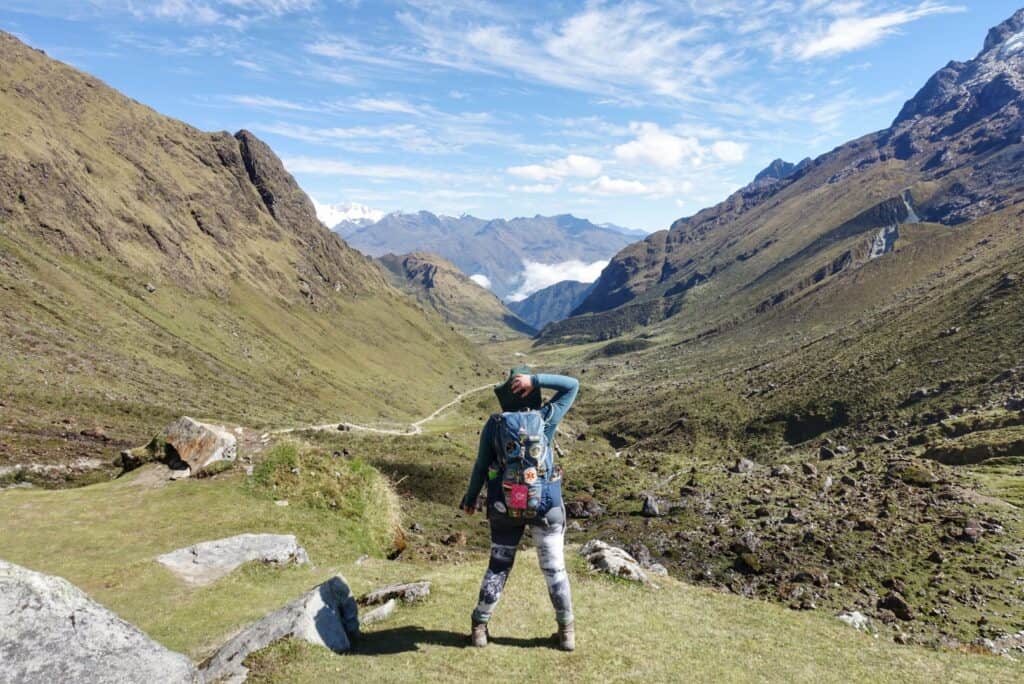
Do I need Travel Insurance for the Salkantay Trek?
I personally, get travel insurance for all of my trips, just in case. As the Salkantay Trek to Machu Picchu is at altitude I highly encourage anyone that wants to do this hike to get travel insurance. If you get altitude sickness, break your gear, your gears gets lost on the way to your destination, or you need to cancel your trip because of weather ot sickness you’ll need quality travel insurance.
Depending on what I need for each trip I look at World Nomads and SafetyWing. They both have amazing customer service and can be purchased online. It takes 5 to 10 minutes to fill out the forms and make your purchase. It’s super easy to make sure you’re covered!
Please note: It is very important to read the fine print and make sure everything you need is covered and you have the right account for you.
What should I Pack for the Salkantay Trek to Machu Picchu?
The short answer is you should pack at light as possible while making sure you have everything you need.
If you’re going with an outfitter, and you should because hiking at altitude without a guide in a remote area is dangerous, your bag will most likely be carried by a porter, packhorse, and in some cases a van or truck. As a result, there will be a weight limit you’ll need to follow. Each outfitter sets its own weight limit and most provide duffel bags for clients to use. Just in case ask in advance about the weight limit and if a bag is provided.
For more details on what to pack visit my Salkantay Trek packing list. Since I’ve done this trek several times I’ve got it down to a science.
Where do you stay during the Salkantay Trek?
The answer to this all depends on your outfitter. Most of the time, and for my trek, you stay in a tent. However, where the tent gets put up can be very special.
For example, one of the nights on my trek we stay at a local coffee farm. We get to see how they grow and make the coffee and the owner of the farm works with our team to make a traditional Peruvian meal called a Pachamanca.
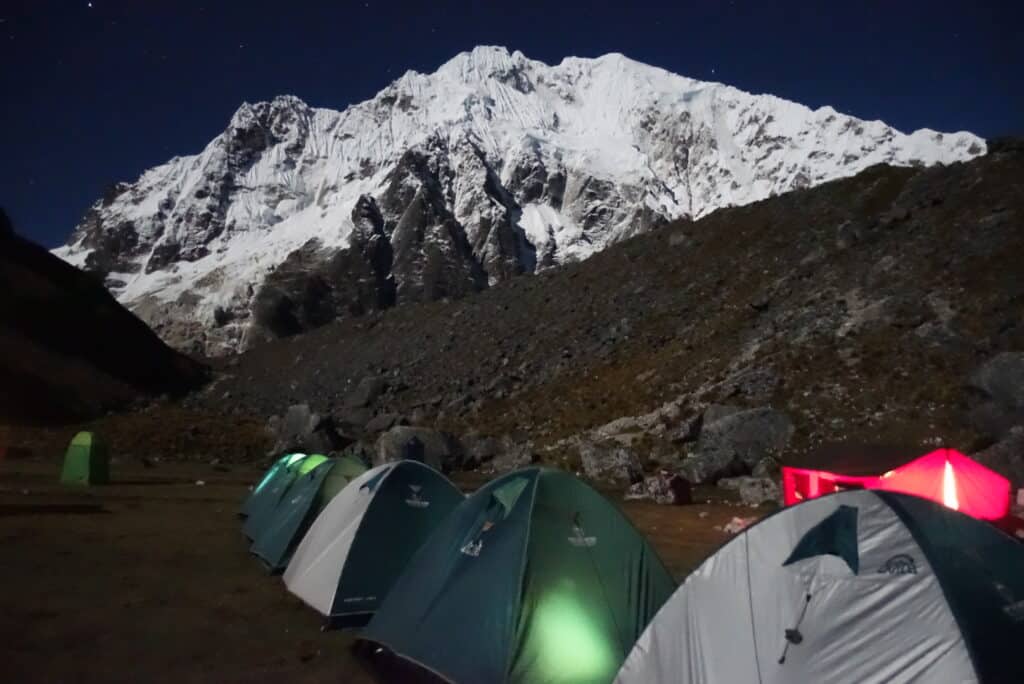
Other times out tent is set up in a wooden loft in a small village with chickens wandering around and locals playing soccer. My personal favorite is sleeping next to Salkantay Mountain. On a clear night when the moon is shining the light reflects off the glacier and it looks like its glowing.
I’ve walked past hostels with full bars and pool tables, and thatch roof shelters to put up tents in. Now matter where you stay, it is bound to be an adventure!
Tips for hiking the Salkantay Trek to Machu Picchu
At this point I hope I’ve answer many of the questions you have about the Salkantay Trek. Here are a few more tips that will help make your adventure even better!
It Gets Cold
I’ve told people this time and time again before leading trips, and there is always one person that doesn’t listen. The first day/night, depending on your schedule, before heading up to the Salkantay Pass is the coldest night on the trip.
Bring a down jacket and warm clothes (hat, gloves, thermals). While you will most likely not use them again, I’ve gone to bed with freezing temperatures and woken up with snow and ice on the ground. You’ve been warned.
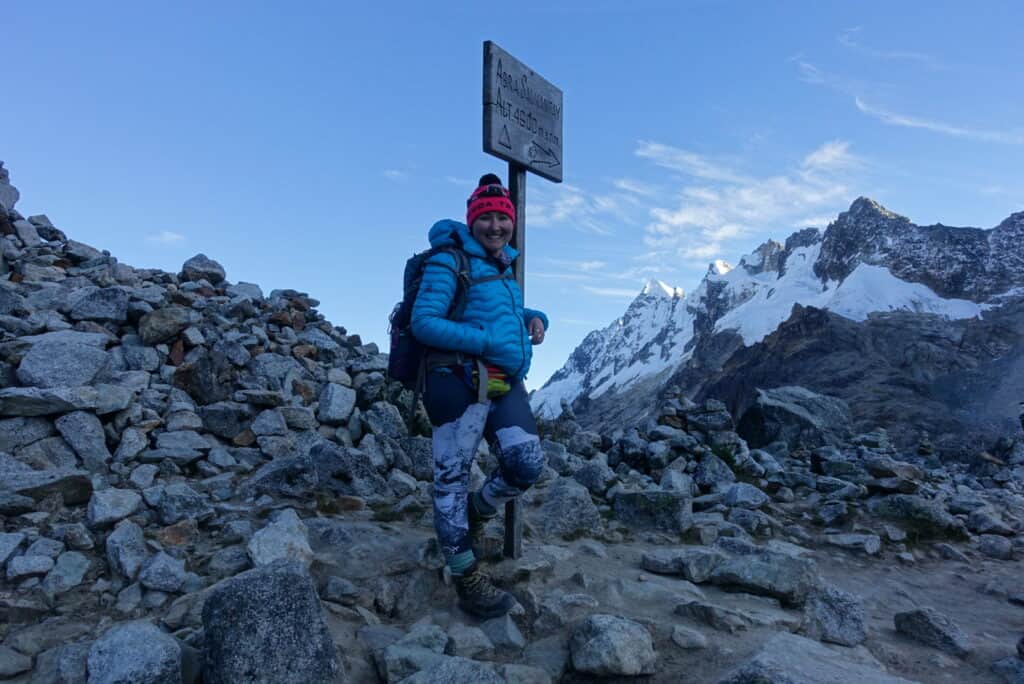
Ask your team if they can fill your water bottle with hot water and stick it at the bottom of your sleeping bag. It will keep you warm all night long. Some outfitters even bring hot water bottles for you!
The Altitude can Get You
I’ve had good times and not-so-good times with altitude on the Salkantay. I’ve vomited, had a head ache, and have felt like a million dollars. No matter how many times you’ve been to altitude, you just never know how you’ll feel.
To help prevent issues with altitude (and remember this is NOT a sure thing):
- Arrive in Cusco several days before you start your trek to rest and get used to the altitude.
- Drink plenty of water before, during, and after your trek.
- Don’t push yourself to hike fast. Hiking at altitude is best done at a slow and steady pace.
- Drink coca tea or crew coca leaves, the locals swear by it. It has helped me and many of my clients while hiknig the Salkantay Trek to Machu Picchu.
- If you’re not feeling well while hiking stop and rest for a bit.
Additionally, I suggest talking to your doctor before you depart on your trip to get some kind of altitude sickness medication. Diamox is the most common altitude sickness medication out there, but you may be prescribed something different depending on any pre-exisitng health conditions.
Insider tip: Don’t take it right before bed. It is a diuretic and you’ll be up all night peeing. Most people take 2 doses each day, take the second mid-afternoon.
You do not hike into Machu Picchu
When hiking the Salkantay you do not hike directly into Machu Picchu. The hike ends at Aguas Calientes, a small town known as the gateway to Machu Picchu. If you want to hike right into Machu Picchu the only way to do that is on the Inca Trail.
Go with a Local Outfitter
Anytime altitude is involved I always recommend hikers go with a local guide because outfitters know the area and how to get someone help in case of an emergency.
They also know the best places to stay along the way and have plenty of knowledge of the local flora and fauna.
Some travelers and hikers turn their noses up at guides and in some places they are not necessary. In my professional opinion when anyone is hiking at altitude you need a guide! Don’t be that stupid tourist that dies because you didn’t make the safe choice.
The Terrain
The Terrain on the Salkantay Trek to Machu Picchu is tough. There is a lot of elevation gain and loss on this trail and it can be challenging for novice hikers. Make sure to pack proper-fitting hiking boots with ankle support as there are times when you’re scrambling over rocks.
Before leaving for your trek get into good hiking shape. This includes plenty of cardio to help with the altitude and strength training to prepare your legs for the steep uphill climbs.
Filter your Water
It’s extremely important that you bring a water filter with you on the Salkantay Trek to Machu Picchu. While the water looks clean and clear there are alpacas, other animals, and people that can potentially contaminate the water. Don’t get sick and always ensure your water if clean.
My favorite, lightweight water filter is the Sawyer Squeeze. It’s compact, packable, and is very easy to use. I’ve used this all over the world and it works wonders.
The Downhills are tough
While most people worry about the uphills when hiking, it’s the downhills that everyone negelcts to remember. On the Salkantay Trek to Machu Picchu there are a lot of very steep and sometimes rocky descents. These can be hard on the knees and should not be overlooked.
I recommend, especially if you have bad knees, to pack a knee brace, some KT tape, and trekking poles. Trekking poles should be taken even if you don’t have bad knees and even if you’ve never used them. Beleive me, they will help you more than you think, and while they can be awkward to use at first, you’ll get in a rhythm and love them!
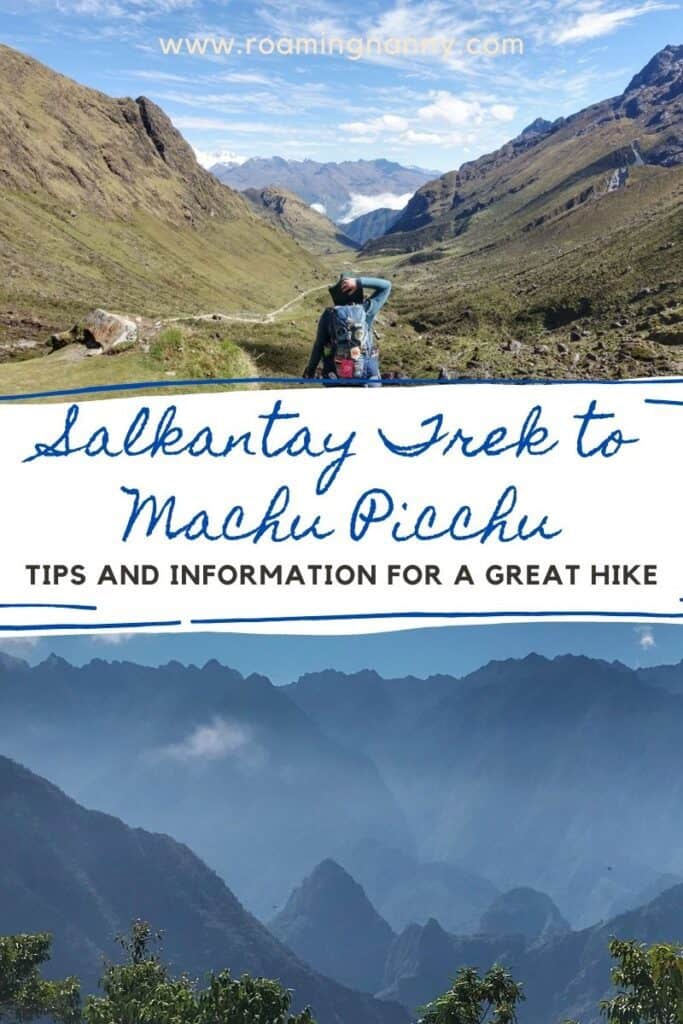
Great post! This hike looks amazing with the best views. I love your photos! I’m hoping to go to Peru after Covid so I’ll definitely be checking this out!
Peru is a spectacular country! The people are lovely, the history is rich, and the views are never ending.
I would love to visit Machu Picchu and to a trek there, so thank you for sharing these tips!
Thank you for reading! If you ever want to do this trek reach out maybe you can come on one of my trips.
I cannot wait to go to Peru! It’s been on my list for so long and I’m desperate to finally go. Thanks for all of the helpful tips!
When you go feel free to reach out and ask as many questions as you want.
Hi Retha!
Great post, so much information.
I’ll be going on this trek in beginning of April (with Whoa)! What do you recommend for a sleeping bag? I have an older 3 season Kelty (it says +20 degrees). But thinking I should get something warmer if I can’t make it warmer.
Thank you!
Hi Bee,
Check out my Salkantay Trek packing list, it has plenty of gear recommendations and my top pick for a sleeping bag for this trip. Send me an email or DM on Instagram if you have any other questions. Can’t wait to meet you in April, I’ll be on that trip!